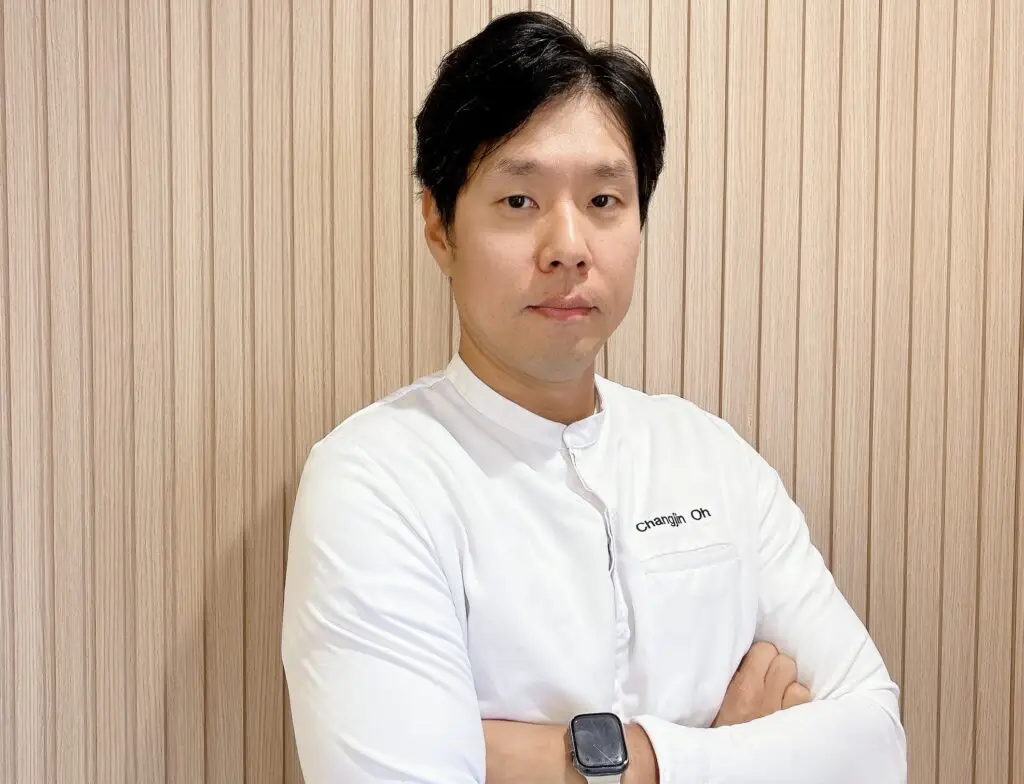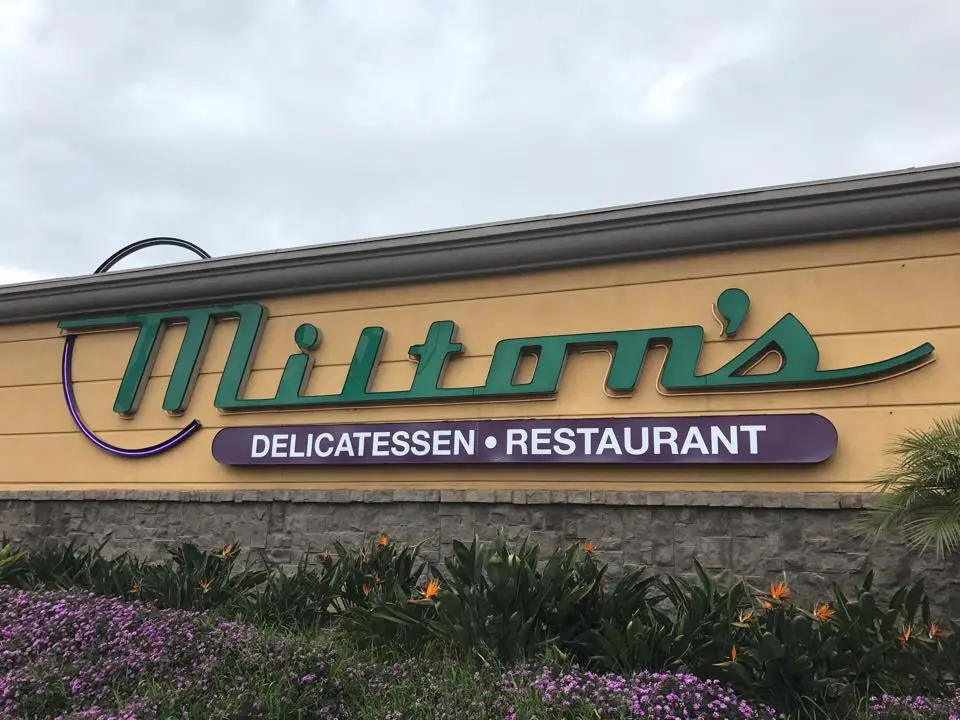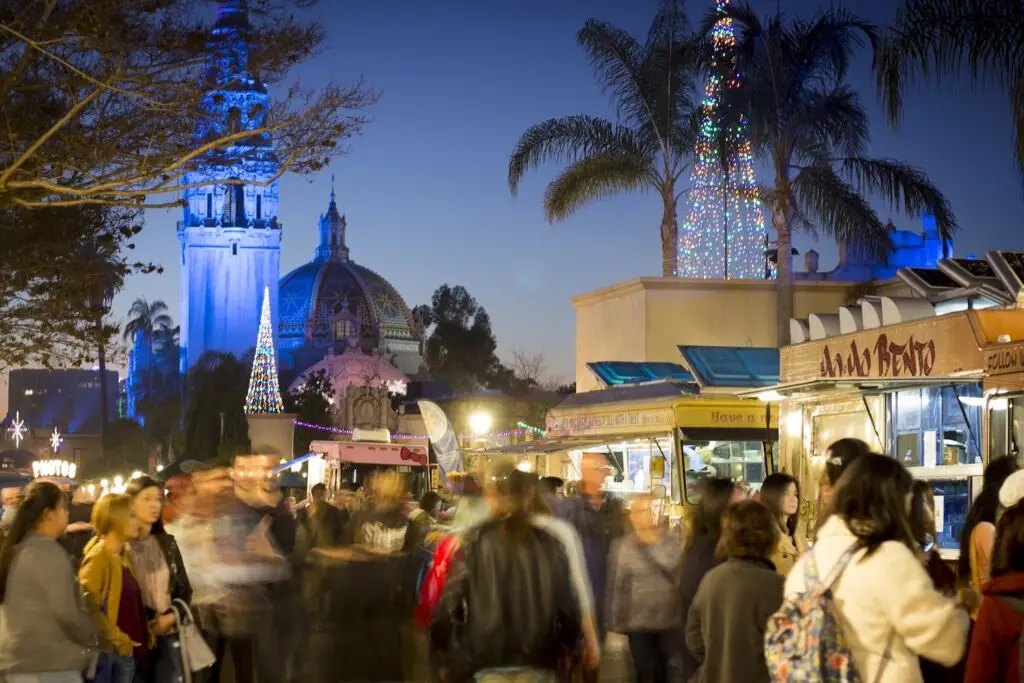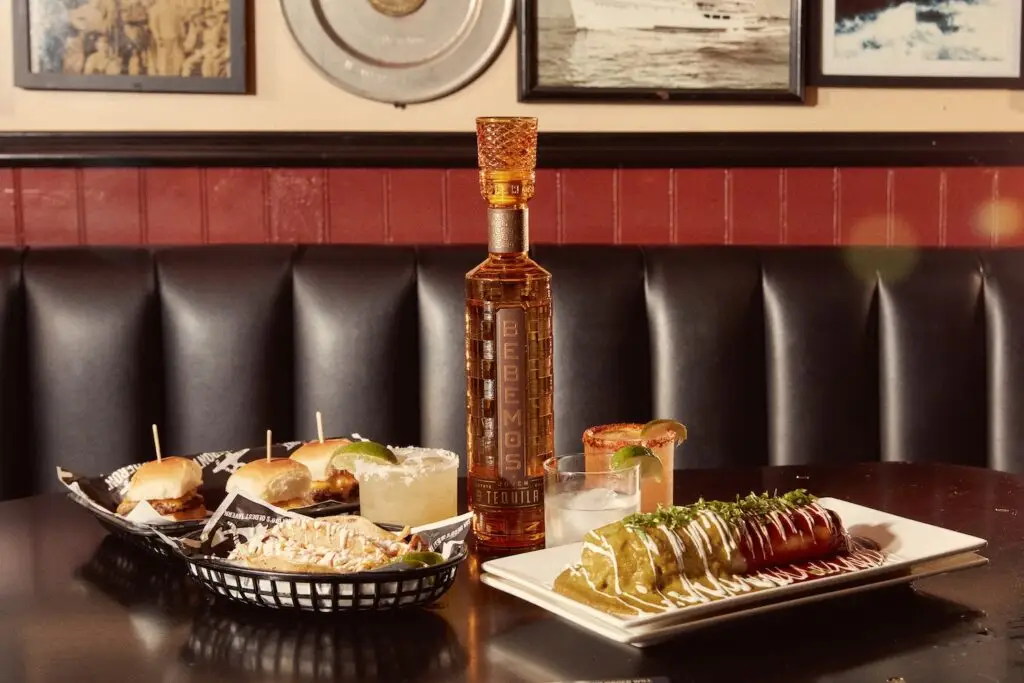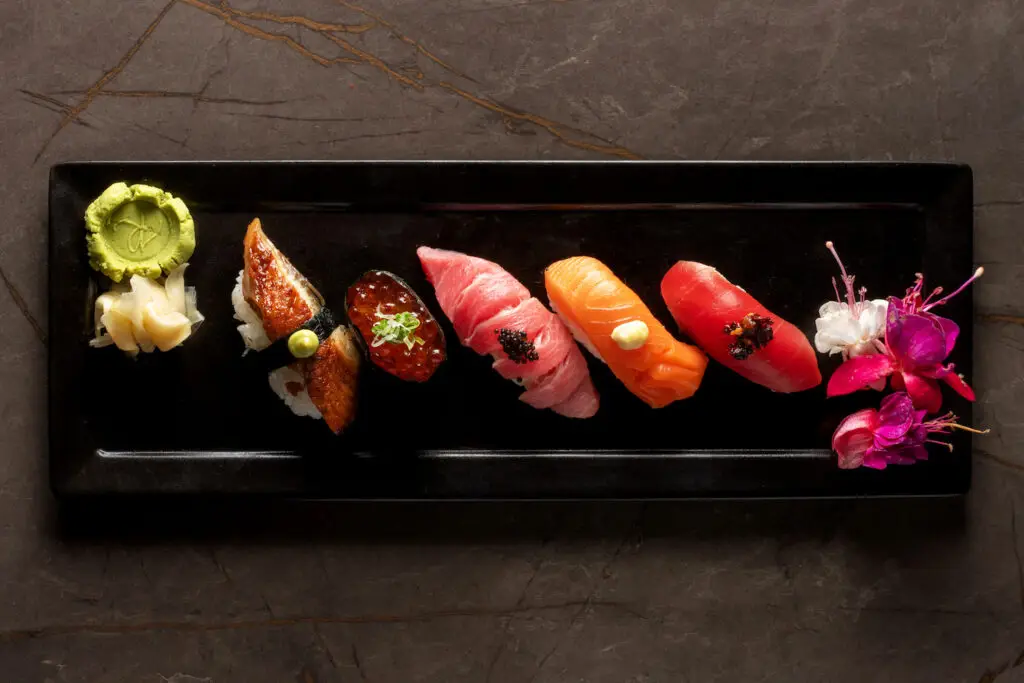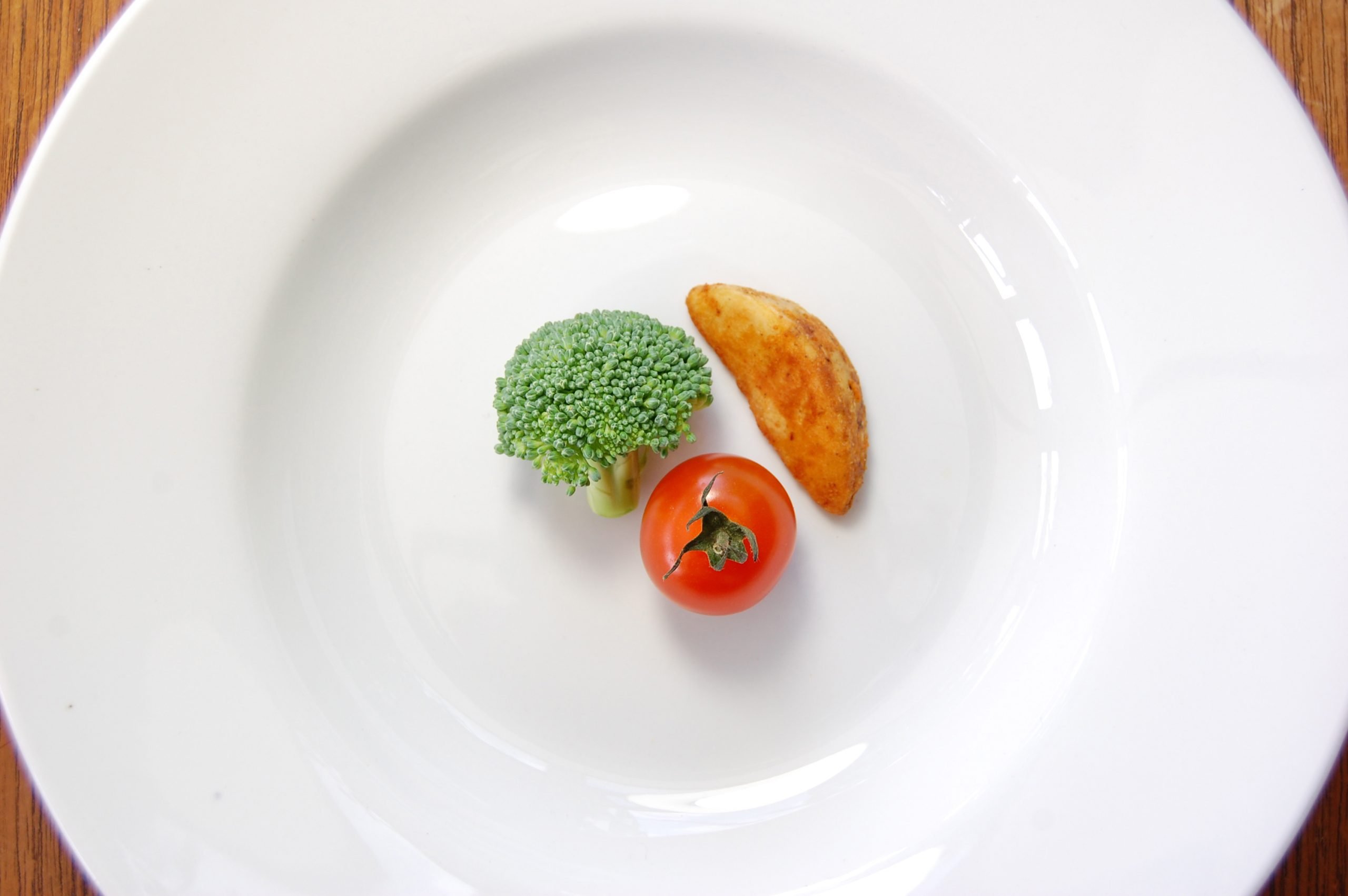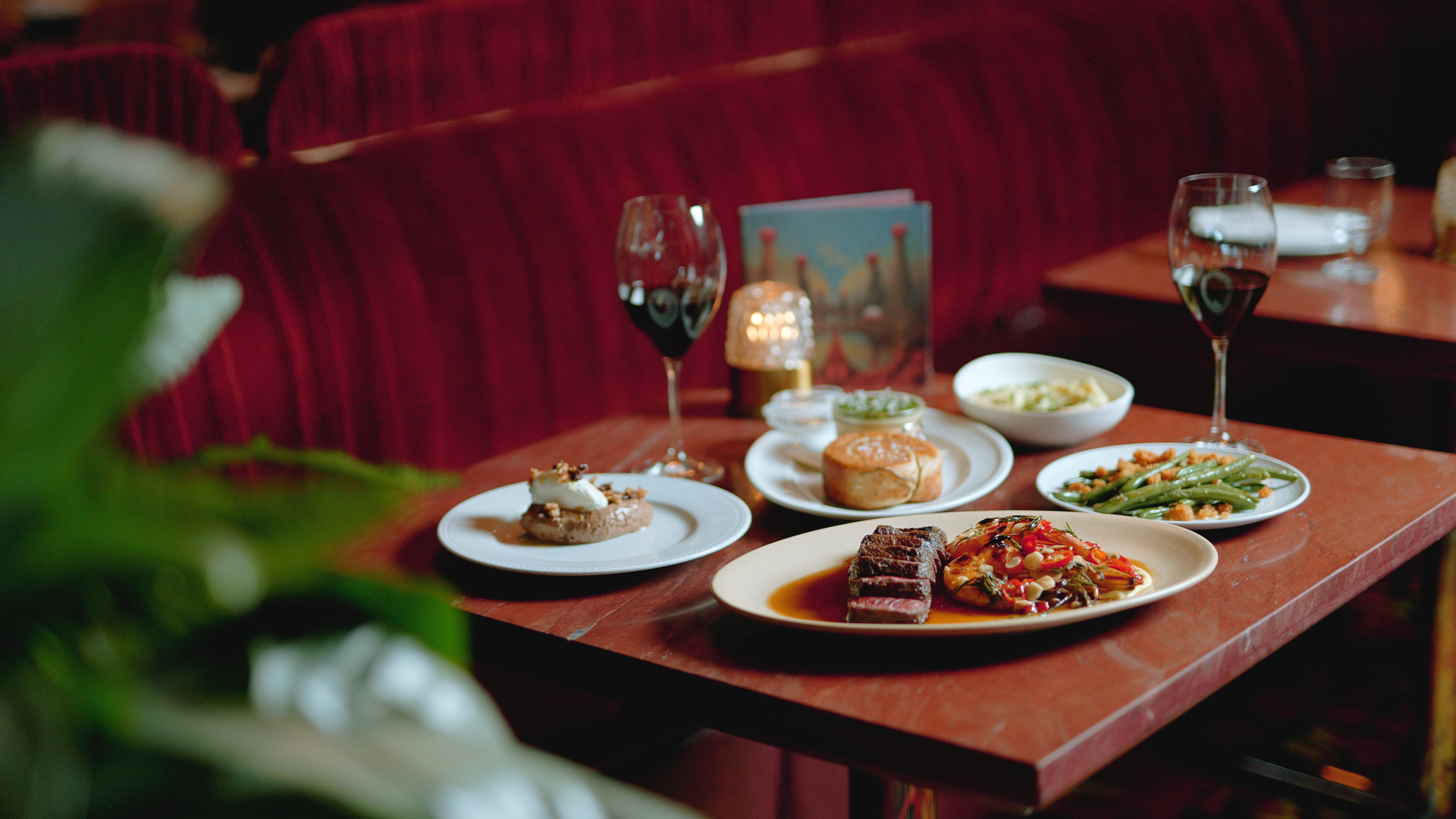After she started taking Ozempic, Kelly noticed a big difference in her restaurant bills.
Kelly, who asked we not share her last name, lives in La Mesa and used to eat regularly at restaurants such as Farmer’s Table and Brigantine Seafood & Oyster Bar. A typical meal at the latter might include a calamari appetizer, the catch of the day entrée, and two cocktails, totalling upwards of $75 just for her.
She started taking Ozempic last August—purely for vanity, she says. Originally designed to treat diabetes, Ozempic, Wegovy, Mounjaro, Zepbound, and related drugs, called GLP-1s, have become the biggest weight loss drug trend the US has seen in decades.
Kelly’s experience sounds ideal: She never felt very sick and experienced no side effects, and she’s lost about 30 pounds. The added bonus is her average bill at Brigantine these days—about $15 for an à la carte taco and a water.
“We just went out to Brigantine and didn’t even use up a whole gift card we’d received,” she says. “And I never go out to lunch anymore, because why would I waste money on something I’m not going to eat?”
“I can see it,” adds Robert Reyes, a San Diego photographer whose work focuses largely on restaurant culture. “I’m taking a GLP-1, and it’s reduced our eating out by 80 percent—on top of eating smaller amounts and ordering less when we do go to restaurants.”
It’s hard to track exactly how many people are taking GLP-1s like Ozempic, because people can get drugs in a variety of ways. But Dr. Eduardo Grunvald, medical director of the Weight Management Program at UC San Diego Health, estimates that roughly 5 to 10 percent of people with weight problems use them. A June 2024 poll from KFF (formerly Kaiser Family Foundation) found that about 12 percent of respondents over the age of 18 have used a GLP-1, and about six percent were actively on one.
If six percent of a restaurants’ client base is eating less and drinking less, the effect on the bottom line is probably navigable. But what happens if that number goes up to 10, 20, or 30 percent of Americans taking GLP-1s?
It just might.
The number of users is predicted to skyrocket—up to 30 million people in the US by 2030, or about 10 percent of the total population. Medicare spending on these drugs shot up from $57 million in 2018 to $5.7 billion in 2022. Markets & Markets estimated that the value of the global GLP-1 industry at $471.1 billion in 2032 (in 2024, it was $47.1 billion).
Right now, there aren’t hard numbers on the effect on the food and restaurant industry—any reports we have are merely anecdotal. But since we’re dealing in anecdotes, here’s a telling one: We started looking into this idea when SDM food editor Troy Johnson attended a panel of industry leaders. The chief marketing officer of one of California’s largest fast-casual food chains told the crowd that one of his biggest competitors right now is Ozempic.
In absence of hard data, let’s use the common sense algorithm. The US is in the midst of one of the biggest diet drug trends we’ve seen in decades. The drug makes people eat and drink less. That will hurt businesses who sell eating and drinking—that is, restaurants.
So, we’re left to wonder: How much is it affecting the restaurant industry now, and how much more of an impact will we see during the impending boom of GLP-1s—which almost all financial leaders claim is coming soon?
“Common sense says it’s probably affecting all restaurants to some degree,” says Scott Slater, who founded Liberty Station burger joint Slater’s 50/50 and co-owns the Del Mar cocktail lounge Understory. “I use it, and when I do, I eat out less. Everyone I know who takes it eats less—that’s the point. So if 10 percent of my market is taking it, then I’m sure 10 percent of my market is not spending with me like they used to. But I also think the new gen drinking less and turning to other vices like weed and mushrooms are bigger threats. Still, common sense says it’s nibbling at my bottom line.”
A Cocktail of Challenges
There have been plenty of diet drug fads throughout history—fen-phen and Benzedrine, Obetrol, and other amphetamines, to name a few. Those trends didn’t last, and, in the grand scheme of things, they didn’t spread to that many people. About six million Americans took fen-phen at its peak in the mid-1990s before the drug was withdrawn from the market (researchers found it caused heart valve defects). So, restaurants persevered.
If KFF’s poll is correct, about 20 million Americans are actively taking Ozempic-like drugs (and 41 million have tried them). That’s more than triple fen-phen’s highest numbers, and Ozempic’s just getting started.
Restaurant margins were also higher in the ’90s, and, overall, there were fewer restaurants competing for customers. Today, it’s a different landscape. Last year was one of the worst years in a long time for restaurants, as they battled inflation that surged prices on almost all of their raw materials—from the food, labor, and rent to table linens. In San Diego, the average hourly wage for restaurant workers was $19.13 in 2023, compared to the national typical wage of $16.58. As inflation soars and the cost of a burger rises, people eat out less.
So, adding another chink in the armor—a drug that zaps the desire to eat food and drink alcohol—could have a disproportionate impact. Of course, there’s nuance: Drugs like Ozempic are expensive, so users tend to be more affluent, which probably means the effect will hurt restaurants with an affluent client base more (which is to say, the James Beards and Michelins of the world).
From a pure “business of restaurants” standpoint, alcohol sales are the real killer. From a human health perspective, of course, it’s generally deemed a positive when Americans drink less booze. But most restaurants don’t make much money from food. The profit is in drinks—alcohol, coffee, sodas, teas. Alcohol sales often make or break sit-down establishments.
Younger generations are already drinking less for a variety of reasons (the unstoppable landslide of wellness influencers, sober-curious trends, budget woes—take your pick). As Slater pointed out, alternative vices (like cannabis and mushrooms) have cut into the alcohol market. In tandem with those trends, Ozempic’s tendency to curb cravings for margaritas or sauvignon blanc create a bigger problem for the existing business model.
“My very dreamy boyfriend asked me to please stop [taking Ozempic] because I turned into Team No-Fun,” says a San Diego business owner who asked to remain anonymous. “Bars and restaurants are our entertainment and what we do. I would be a nightmare to hang out with because nothing sounded good. Part of what Ozempic does is kill the food noise, but it also made me not want alcohol. I might not be his skinny girlfriend, but I had to quit for the sake of us.”
Goodbye, Hedonism
Weight-loss expert Dr. Grunvald says the drugs affect three parts of the brain that control our eating: how hungry we feel, how full we feel when we eat, and the pleasurable “hedonic or reward eating” feeling. He adds that there’s now also growing research that shows these drugs dampen addictions and cravings, including for alcohol and sweet and fatty foods. “There’s a lot of overlap between the reward that we get from eating and possibly the reward that we get from other addictive behaviors,” he explains.
The drugs mimic a hormone in the brain that tells us we’ve eaten enough. While, naturally, those hormones only last in our bloodstreams for a few minutes, the drugs last a whole week.
“We all know that feeling, right? After you’ve eaten a large meal and even your favorite foods just don’t seem appetizing because you’re just so full,” Grunvald says. “Imagine feeling like that all day long, where that donut just doesn’t call to you at all.”
Restaurants often appeal to our hedonism, to our sense of joy, and, sometimes, to our overindulgence. GLP-1s tend to make people immune to those decadent charms.
Eric Adler, the owner of Puesto in La Jolla, remembers scrolling the app formerly known as Twitter late one night and seeing a headline about the growth of Ozempic. “I was like, ‘Oh no, eating less food, that’s not going to be good for me,’” he recalls.
However, Adler reports that he hasn’t seen an impact in sales because, he thinks, people still just love to dine out. “There’s a few things that people do socially, and dining out is a special thing,” he says.
Another owner of a local restaurant chain says he is taking an Ozempic-like drug and still eats out just as often. He just has a lot more leftovers to bring home.
People eating less because of Ozempic wasn’t on the radar for PJ Lamont, owner of NZ Eats Group (the company behind spots like Queenstown Public House and Dunedin). “I actually asked two of my general managers, ‘Hey, am I living under a rock?’” he says. “Obviously, I know of Ozempic, and I know that it’s popular, but I never thought of it as something that could be a tipping point in the industry. But I also never thought Covid would, and that didn’t turn out.”
Lamont has, however, seen a demand for less food. After a 2024 that “sucked for restaurants,” he says, he asked his customers how they could improve. “A lot of our feedback was about our plates being so big [that] nobody finished them,” he continues. “So, we’ve been slowly scaling them down. I thought that people would be up in arms, and it’s been the opposite.”
Whether they’re on a weight loss drug or not, people are drinking less, paying attention to portions, and going out less, Lamont adds. Regarding the sagging demand for alcohol, he says, “I think it’s a good thing. I mean, it sucks for me; it sucks for my businesses, but I think it’s a good thing. And I think it can be offset in other ways. But I’m not sure what yet. So, we, the restaurateurs, have to be conscious of that and make sure that we are really upping our game on every reason that someone goes out—the quality, the service, everything. It’s made all of us sharpen our pencils, or at least it’s made me sharpen my pencil.”
Most of the restaurateurs we talked to agree on one thing: If people are eating and drinking less, the restaurants that are better prepared for the shift will be the ones who invest in the environment, the design, the whole experience. More than a few pointed to CH Projects and their wild, maximalist design and art restaurants like Quixote, Leila, and Craft & Commerce.
To make up for the effect, restaurants might also reduce portion sizes (thus saving on food and drink costs), which arguably has been long overdue in the massive-portion US restaurant culture.
Meanwhile, Lia Hunter, who co-owns Barrio Logan restaurant Lia’s Lumpia with her son Spencer, is choosing to see GLP-1s as a passing fad. “You have the people that are like, ‘Well, one day I’m gluten free, one day I’m not; one day I’m vegan, one day I’m not,’” she says. “For people who take Ozempic, I really see it as a cosmetic procedure.”
PARTNER CONTENT
But as more people become customers like Kelly, restaurants may need to adapt. Kelly’s advice for places that want to keep her business? Offer smaller portions and foods that are packed with protein, fruits, and vegetables.
“I still like to go out,” she says. “I’m just going to order less.”
